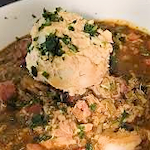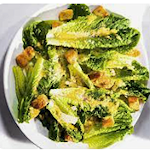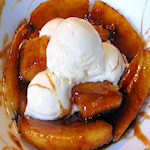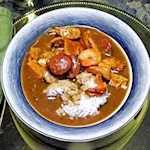
Serving gumbo with potato salad is a tradition in some parts of the southern United States, especially in Louisiana. This combination has its roots in Cajun and Creole cuisine, where both gumbo and potato salad are staple dishes. Here's why this pairing works and is popular in the South:
Contrast in Textures and Temperatures: Gumbo is a warm, hearty, and often spicy dish, while potato salad is cool and creamy. Serving them together provides a pleasing contrast in both texture and temperature. The creaminess of the potato salad can balance out the heat and spice of the gumbo. A comparison can be made to how, as barbecue sides, warm, spicy baked beans pair well with cool and vinegary cole slaw.
Practicality: In some cases, potato salad is used as a substitute for rice, which is traditionally served with gumbo. It's a way to add another layer of flavor and texture without needing to prepare a separate dish of rice. Those experiencing the combination for the first time may be surprised to see a large scoop of the potato salad actually served in the gumbo rather than alongside. About half the restaurants in South Louisiana serve it that way.
Cultural Tradition: This pairing is deeply rooted in the food culture of the region. In many Southern homes and local restaurants, serving potato salad with gumbo is simply the way it's always been done, passed down through generations. There is some speculation that it may have much to do with the German immigrant population in Louisiana adding it own cultural input.
Flavor Balance: The typical style of potato salad served in this setting is very yellow mustard-forward. The acidity from ingredients like mustard or vinegar in potato salad complements the rich, savory flavors of the gumbo. It creates a balanced bite, where the tangy and creamy potato salad cuts through the richness of the gumbo.
This tradition is especially prevalent in the southwestern parts of Louisiana, such as Acadiana, where Cajun and Creole influences are strongest. The unique flavor profiles and cultural practices of the region are what make this pairing so beloved. Give it a try yourself!











